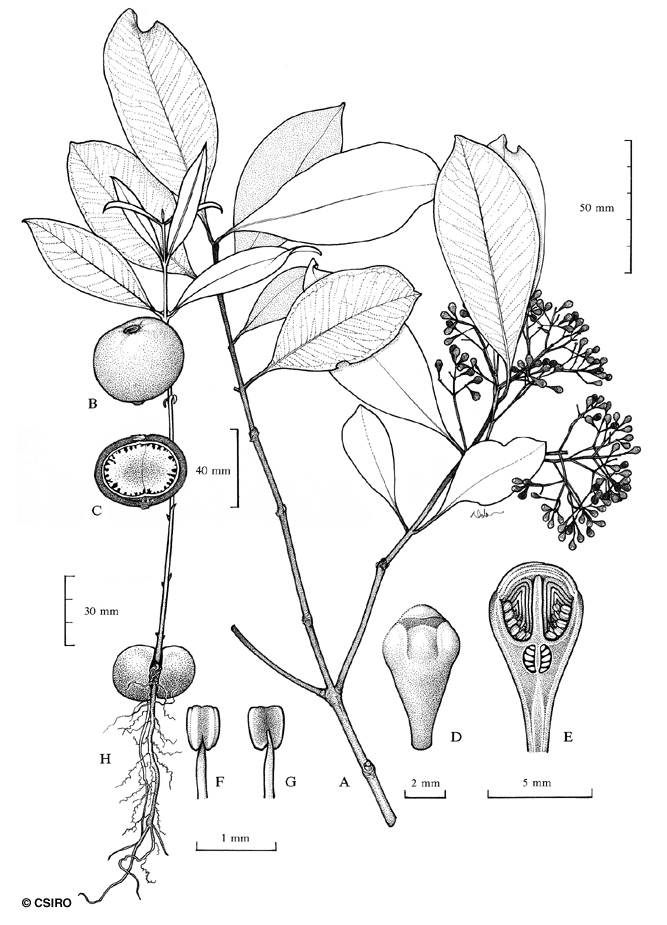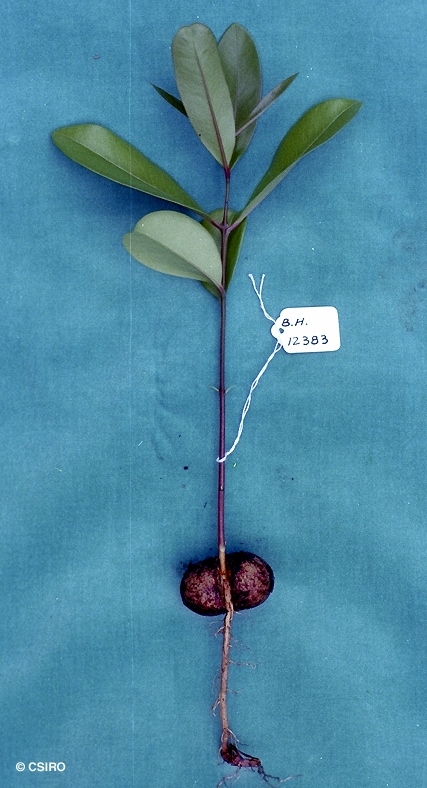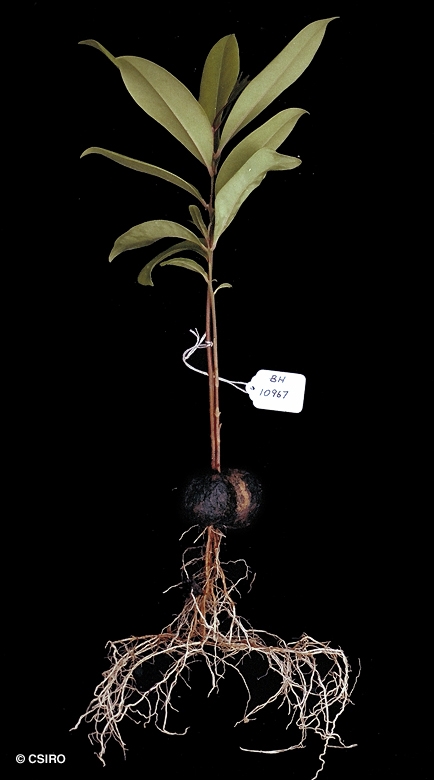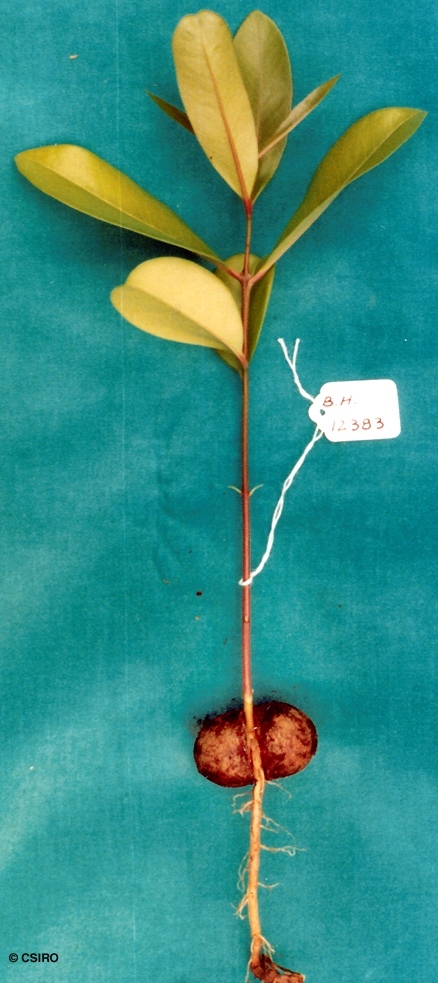Australian Tropical Rainforest Plants - Online edition
Syzygium bungadinnia (F.M.Bailey) B.Hyland





Hyland, B.P.M. (1983) Australian Journal of Botany Supplementary Series 9: 64.
Bungadinnia; Bungadinnia Satinash; Satinash, Bungadinnia; Watergum; Paperbark Satinash
Bark papery, red or orange-red. Papery flakes very thin and transparent.
Inflorescence terminal, axillary and also on lateral shoots below or back from the leaves, bracts deciduous, absent at anthesis. Calyx tube (hypanthium) + pedicel about 7-11 mm long, calyx tube (hypanthium) about 4-6 mm diam., calyx lobes dimorphic, inner slightly larger, rounded, about 2-3 mm long. Petals often cohering, +/- orbicular, each petal to about 6 mm diam., oil dots distinguishable with difficulty, about 30 or more per petal. Outer staminal filaments about 4-8 mm long, anthers about 0.7 x 0.5 mm, gland inconspicuous, dorsal. Ovules about 10-14 per locule, placentas central, ovules radiating, ascending. Style about 5-11 mm long, approximating the stamens.
Fruits depressed, transversely ovoid, slightly bilobed (scrotiform) about 35-50 mm long and about 50-70 x 40-60 mm on the longer and shorter diameters, calyx lobes persistent, about 2-3 mm long, pericarp firm when ripe but brittle and granular in texture when immature. Seed solitary, about 20-30 x 30-50 mm along the longer diameter, testa adhering somewhat to the pericarp and adhering quite strongly to the cotyledons by means of numerous peg-like intrusions into the cotyledons, cotyledons uniformly textured except for the +/- ruminate peripheral section. Radicle central.
Endemic to CYP. Altitudinal range from sea level to 250 m. Grows in rain forest and gallery forest. Possibly occurs in New Guinea.
This species is not utilized commercially but could produce a useful structural timber.
Wood specific gravity 0.78. Hyland (1983).





